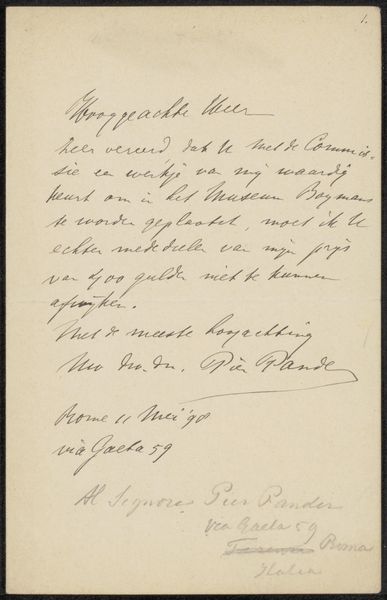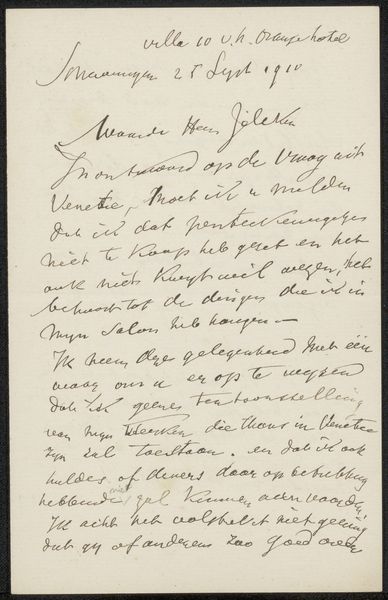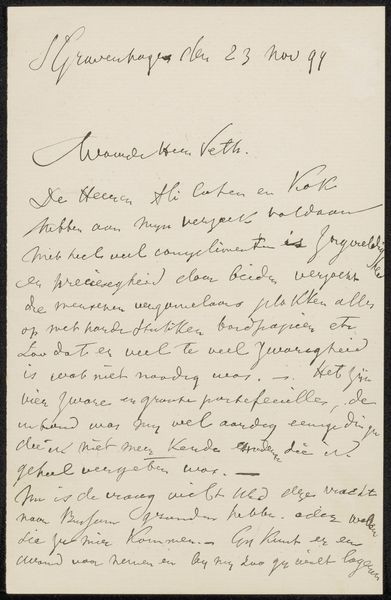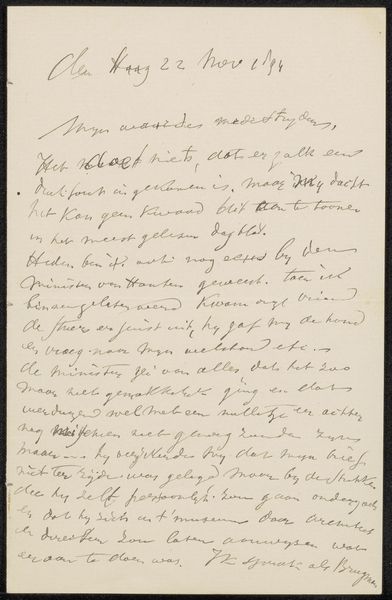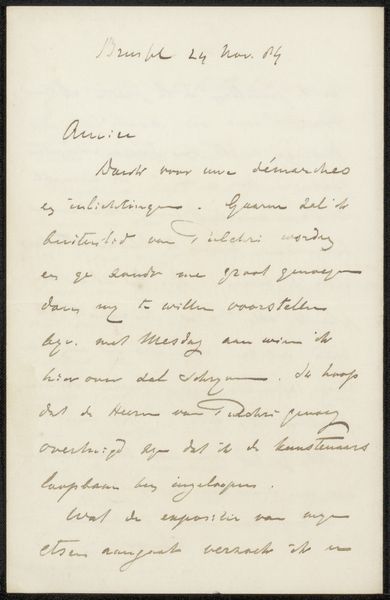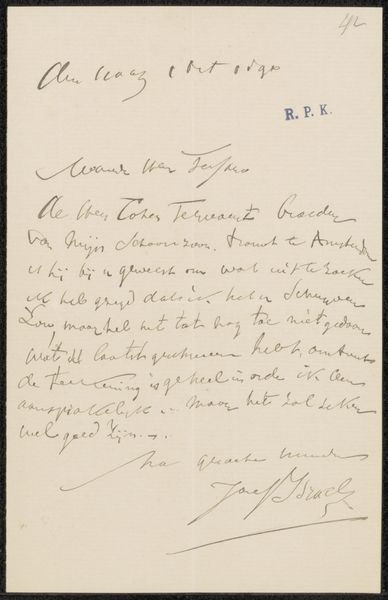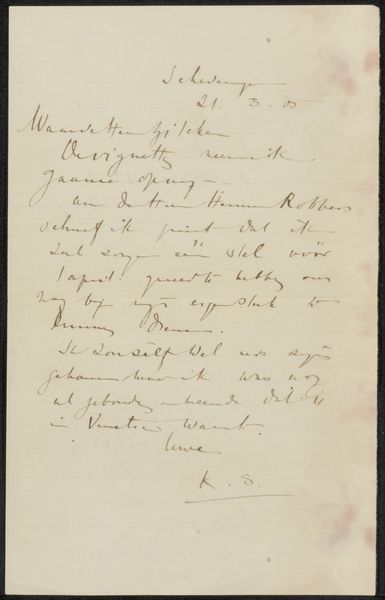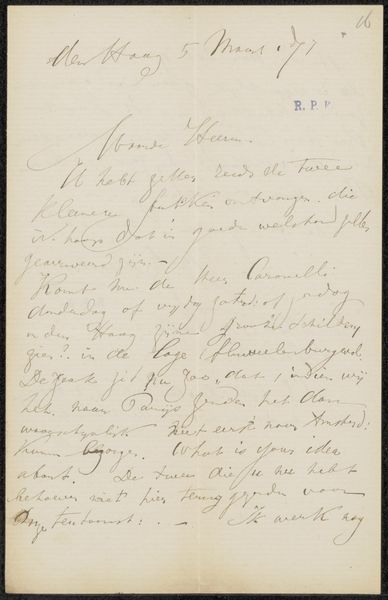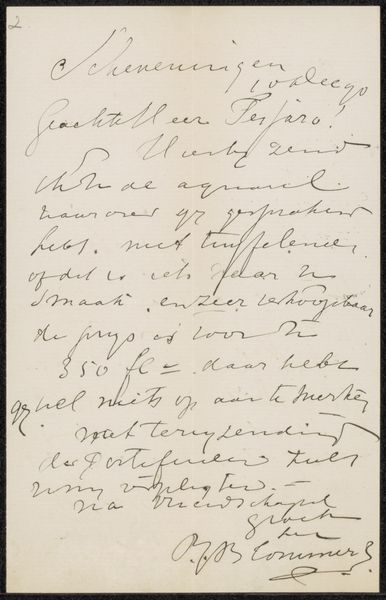
drawing, paper, ink, pen
#
drawing
#
ink paper printed
#
hand drawn type
#
paper
#
personal sketchbook
#
ink
#
hand-drawn typeface
#
ink drawing experimentation
#
intimism
#
pen-ink sketch
#
ink colored
#
pen work
#
sketchbook drawing
#
pen
#
sketchbook art
Copyright: Rijks Museum: Open Domain
Editor: This is "Brief aan Filippo Tessaro," possibly from the 1890s, by Jozef Israëls, currently at the Rijksmuseum. It's an ink drawing on paper, a letter, really, filled with handwritten script. The handwriting feels very personal, intimate even. What's your take on a piece like this? Curator: As a historian, I'm intrigued by how seemingly private documents enter the public sphere of a museum. This letter offers a glimpse into Israëls’s world, but it also highlights the power dynamics involved in collecting and displaying personal narratives. Who decides what's worthy of preservation and public view, and what gets left out? Editor: That's interesting. It makes me wonder about the relationship between the artist and the recipient. It seems pretty informal. Curator: Exactly. Understanding their relationship, their social standing, helps contextualize the letter’s contents. Was Tessaro a patron, a fellow artist, or a friend? These details are crucial. Consider how the museum itself shapes our interpretation. Displaying it alters its original purpose, turning a private communication into a historical artifact, a spectacle. Editor: So, its meaning shifts depending on where it is and who is viewing it? Curator: Precisely. Its value, both artistic and historical, is negotiated by the museum’s choices: how it's framed, the accompanying text, even its placement within a larger exhibition all contribute. Whose stories are prioritized here, and what does that say about the art world at the turn of the century? What does it say about the institution displaying it now? Editor: I never thought about the museum’s role as actively shaping how we understand a piece. That definitely gives me a lot to consider. Thanks! Curator: Indeed. This reminds us that art isn’t created in a vacuum, but within complex social and institutional frameworks. Looking beyond the image and questioning its journey to the museum helps to fully appreciate its meaning and its history.
Comments
No comments
Be the first to comment and join the conversation on the ultimate creative platform.
